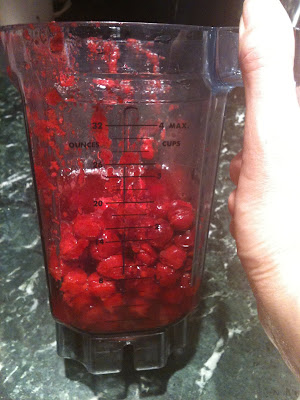 |
| Gloria admiring the late January flowers |
Cornelian cherry is popular with writers of antiquity and the middle ages. Their fruit was fed to pigs by Circe, preserved like olives by a Columella; their wood was turned to spears by Romulus. No monastery was complete without one.
Why has no one heard of Cornus mas, also known as the cornelian cherry, or cornelian dogwood? Your guess is as good as mine. This tree has it all.
Cornelian dogwood flowers in late January to February, ahead of the forsythia and the Camellia. Its little yellow flowers are a treat to look at and a life saver for any pollinating insects that happen to be active at that unusual time of year.
Our tree is large for the species, most are multi-trunked, large shrubs. The wood is slender and tough; sprouting wood is very straight. We gave some to a friend who made drum sticks from it. Shoots have been used for wagon spokes and weapons. I think they would make good magic wands, conferring to the wizard the beauty, tenacity and generosity of the tree.
 |
|
The whole tree is covered with fruit.
|
 Come summertime, the whole tree covers itself with fruit. Because it does not all ripen at once, the weeks leading up to harvest are gorgeous, with yellow, orange, red and maroon fruit studding the tree like multi colored lights.
Come summertime, the whole tree covers itself with fruit. Because it does not all ripen at once, the weeks leading up to harvest are gorgeous, with yellow, orange, red and maroon fruit studding the tree like multi colored lights.  The cornelian cherry is not a true cherry. The picture to the right shows a branch without fruit -the leaves are opposite at each node.
The cornelian cherry is not a true cherry. The picture to the right shows a branch without fruit -the leaves are opposite at each node. This cherry is a dogwood! Compared to real cherries, this fruit has a much later harvest time.
Ours is ready in late August. I've seen one at Kubota Gardens http://www.kubota.org/ that's about three weeks later. I've also seen them at Seattle Center, near the Armory. It is beginning to ripen right now, as of August 27.
Cornelian cherries are native to Eastern Europe and Western Asia. When you see a jar of "cherry" jam in a Turkish deli, it may really be from these fruit.
You want to pick cornelian cherries at the peak of ripeness. Wait until they are deep, maroon red, and gently pinch one. It should be slightly soft between your fingers. If you pick one too early, you will know the moment it goes in your mouth. They are astringent, puckery and frankly, you will never want another one.
Breath. It wasn't ripe. Try a darker one.
The flavor should be sweet with a hint of sour around the pit, aromatic profiles of banana and pear and a moist, slightly mealy texture. They are ok for fresh eating - but you are probably harvesting plums, blackberries and raspberries right now - the very finest fresh fruits of the year. Cornelian cherries shine in preserves, jam and other winter treats.
 |
| Risky but speedy way to remove pits |
Once pitted, the pulp is good to go.
You can use it in any jam recipe, or freeze the pulp and bake it into pies, danish pastry, or anywhere you would use cherries or other summer fruit. I make a jam by boiling equal weights of pitted fruit and sugar with one teaspoon citric acid per quart of fruit. Once it reaches boiling I cook for 6 minutes, then pour it into hot jars, seal, and bring to boil in a water bath for ten minutes. This makes a soft, sauce-like jam. The jam will not reach its full, bright red color without added acid. Like many red foods, it discolors to a grayish purple if its pH gets to high.
 Once the cornelian cherry passes its ripened prime, it is one of the fastest fruits to ferment. I would love a wine making friend to come experiment with some fully ripe specimens. They might make good natural-yeast wine, and almost certainly they would do well with any recipe.
Once the cornelian cherry passes its ripened prime, it is one of the fastest fruits to ferment. I would love a wine making friend to come experiment with some fully ripe specimens. They might make good natural-yeast wine, and almost certainly they would do well with any recipe.Every year, we harvest four or five gallons of fruit. This represents maybe a tenth of the tree's total contribution. We simply can't eat it all. We share what we can with other people, because we know what happens to the rest. As the fruit ferments, first on the tree and then falling to the ground below, the ducks, wasps, goats and chickens move in for the big party.
There is plenty of evidence, in the form of raccoon and bird leavings, that wildlife gets in on the bounty as well.
We don't mind having a mixed bunch of happy animals crashed on our lawn, but man are they grumpy the next day. Until they go back for a little "hair of the dogwood"


No comments:
Post a Comment